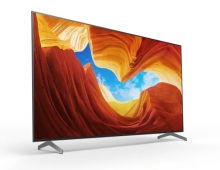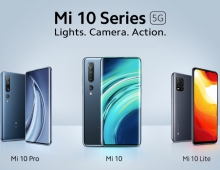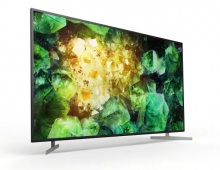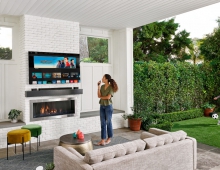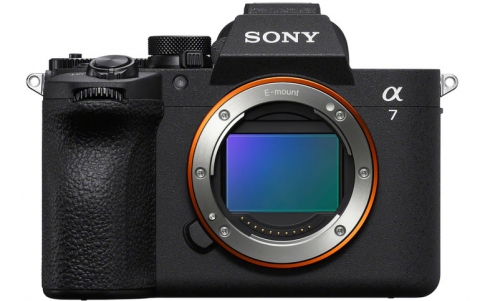
IHS Predicts 4.6 Million UHD LCD TV Units To Be Shipped in US in 2018
While ultra-high-definition (UHD) sets still will be relegated to a small share of total television shipments for the next few years, recent moves by panel makers and brands to reduce costs and increase the availability of content have bolstered the long-term shipment outlook, with nearly 5 million expected to ship in the United States in 2018.
Starting from a mere 200,000 units this year, shipments of UHD LCD TVs in the United States will rise by a factor of 23 to reach 4.6 million units in 2018, according to information and analytics provider IHS. UHD will grow to account for 13 percent of total U.S. liquid-crystal display (LCD) television shipments in 2018, as presented in the attached figure. In comparison, UHD will represent only a small share of the market in the near term, at 1 percent of the U.S. LCD TV market in 2013, 3 percent in 2014 and 5 percent in 2015.
While IHS had previously forecast global UHD shipments to amount to only 2.1 million units in 2017, that now has been raised to 3.6 million in the U.S. alone, reflecting the rapidly improving outlook for the market.
"Pricing for UHD sets is expected to come down dramatically in 2013 and the following years, making them much more affordable for consumers on average," said Veronica Thayer, analyst for consumer electronics & technology at IHS. "Just as importantly, UHD television brands are striving to avoid repeating the mistakes they made with 3-D TV?namely, attempting to charge a major price premium for a feature that lacked sufficient content to generate consumer interest. Recent developments indicate the TV makers have learned key lessons from the 3-D debacle that will boost the long-term outlook for UHD shipments."
The average UHD TV will cost four times as much as the average for all LCD TVs in the United States in 2013. However, by 2018, that cost multiple will narrow to 2.6.
In 2018, the average shipping price of a UHD TV will fall to slightly less than $1,200, down from $3,128 in 2013.
Illustrating how quickly prices are coming down, TV and Audio systems manufacturer Seiki Digital in April released an affordable UHD set in the United States: the SE50UY04 50-inch model, priced at just $1,500.
Top panel suppliers such as Samsung, LG Display, AUO and Innolux are all introducing UHD LCD TV panels, with TV brands like Sony, Sharp, Samsung, LG Electronics and many Chinese names launching or planning to introduce their own offerings later this year. With the panel representing the most expensive portion of the set, this flood of products at various price points and sizes will help drive down pricing.
Many TV brands are actively working to provide UHD content, either through upscaling or through the creation of proprietary UHD content. Already, Japan has plans to begin UHD broadcasting as soon as 2014, two years earlier than originally planned. Also, 4K cameras and camcorders are now on the market, enabling creation of UHD content. Movies in UHD likewise are starting to show up.
The increased focus on UHD LCD TVs comes in part from delays in commercialization for organic light-emitting diode (OLED) TVs, an advanced technology that has encountered various challenges in manufacturing. OLED?s fumble has led to opportunity for UHD LCD TVs, allowing them to claim the high-end position in the global television market.
While IHS had previously forecast global UHD shipments to amount to only 2.1 million units in 2017, that now has been raised to 3.6 million in the U.S. alone, reflecting the rapidly improving outlook for the market.
"Pricing for UHD sets is expected to come down dramatically in 2013 and the following years, making them much more affordable for consumers on average," said Veronica Thayer, analyst for consumer electronics & technology at IHS. "Just as importantly, UHD television brands are striving to avoid repeating the mistakes they made with 3-D TV?namely, attempting to charge a major price premium for a feature that lacked sufficient content to generate consumer interest. Recent developments indicate the TV makers have learned key lessons from the 3-D debacle that will boost the long-term outlook for UHD shipments."
The average UHD TV will cost four times as much as the average for all LCD TVs in the United States in 2013. However, by 2018, that cost multiple will narrow to 2.6.
In 2018, the average shipping price of a UHD TV will fall to slightly less than $1,200, down from $3,128 in 2013.
Illustrating how quickly prices are coming down, TV and Audio systems manufacturer Seiki Digital in April released an affordable UHD set in the United States: the SE50UY04 50-inch model, priced at just $1,500.
Top panel suppliers such as Samsung, LG Display, AUO and Innolux are all introducing UHD LCD TV panels, with TV brands like Sony, Sharp, Samsung, LG Electronics and many Chinese names launching or planning to introduce their own offerings later this year. With the panel representing the most expensive portion of the set, this flood of products at various price points and sizes will help drive down pricing.
Many TV brands are actively working to provide UHD content, either through upscaling or through the creation of proprietary UHD content. Already, Japan has plans to begin UHD broadcasting as soon as 2014, two years earlier than originally planned. Also, 4K cameras and camcorders are now on the market, enabling creation of UHD content. Movies in UHD likewise are starting to show up.
The increased focus on UHD LCD TVs comes in part from delays in commercialization for organic light-emitting diode (OLED) TVs, an advanced technology that has encountered various challenges in manufacturing. OLED?s fumble has led to opportunity for UHD LCD TVs, allowing them to claim the high-end position in the global television market.


